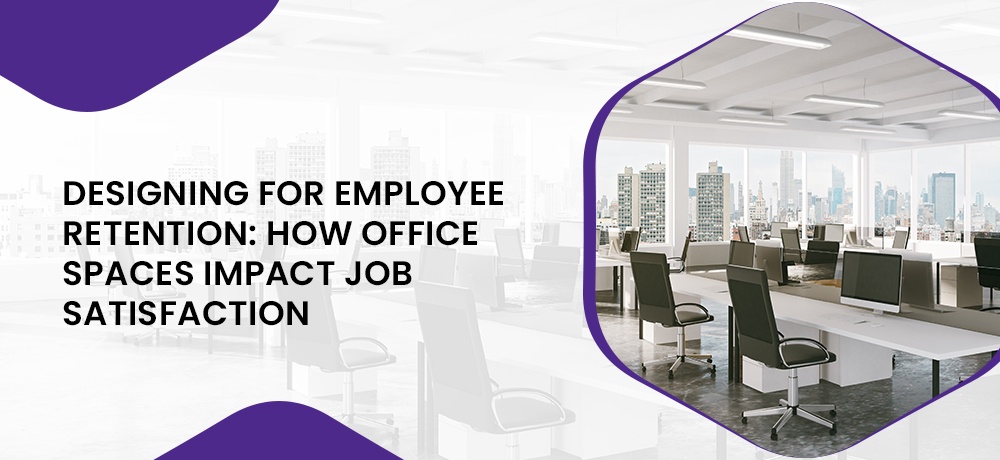Designing for Employee Retention: How Office Spaces Impact Job Satisfaction

Introduction: In today's competitive job market, employee retention has become a top priority for businesses aiming to maintain a skilled and motivated workforce. While various factors contribute to employee satisfaction and engagement, office design is increasingly recognized as a powerful tool in influencing these outcomes. A well-designed office space can go beyond aesthetics and comfort, directly impacting job satisfaction and ultimately contributing to employee retention. In this blog post, we will delve into the crucial relationship between office spaces and employee retention, exploring how thoughtful design can create an environment where employees feel valued, motivated, and inspired to stay committed.
- The Link Between Office Design and Job Satisfaction: Office design goes beyond providing functional workstations and attractive décor. It has the potential to shape employees' experiences, interactions, and overall well-being. A thoughtfully designed office communicates a company's culture, values, and commitment to employee welfare, which directly influences job satisfaction and retention rates.
- Fostering a Sense of Belonging: Employees are more likely to stay with a company that makes them feel like an integral part of a larger community. Office spaces that incorporate the company's mission, vision, and branding help create a sense of belonging. Displaying company achievements, employee recognitions, and community involvement demonstrates that the company values its employees' contributions, leading to a stronger emotional connection and higher job satisfaction.
- Promoting Collaboration and Teamwork: Collaboration is a cornerstone of modern work dynamics. Office layouts that encourage teamwork through open spaces, collaborative zones, and communal workstations foster connections among employees. When employees can easily interact, share ideas, and collaborate on projects, they experience a sense of camaraderie that contributes to job satisfaction and encourages them to remain loyal to the organization.
- Enhancing Well-being and Comfort: Employee well-being is intrinsically linked to job satisfaction. A well-designed office considers ergonomic furniture, ample natural light, proper ventilation, and acoustic comfort. Spaces that prioritize employee health and comfort contribute to reduced stress levels and improved overall well-being, making employees more likely to feel content and committed to their roles.
- Personalization and Empowerment: Employees value the ability to personalize their workspace. Allowing employees to add personal touches, such as photos, artwork, or plants, empowers them to create a space that resonates with their identity. Personalized workspaces convey a sense of ownership, autonomy, and respect, enhancing job satisfaction and attachment to the company.
- Offering Spaces for Focus and Relaxation: A balanced work environment caters to various work modes. Quiet zones, relaxation areas, and designated spaces for focused work contribute to employee satisfaction by acknowledging diverse work preferences. Employees who can find spaces that match their current task needs are more likely to remain engaged and content in their roles.
- Flexibility to Adapt to Changing Needs: Office design should be adaptable to accommodate evolving work dynamics. As job roles change, teams grow, and new projects emerge, the office should be able to accommodate these shifts. Flexible furniture arrangements and modular design elements allow the office to adapt without major disruptions, ensuring that employees have the resources they need to perform effectively.
Conclusion: Designing office spaces with employee retention in mind is a strategic investment that pays dividends in terms of job satisfaction, engagement, and long-term commitment. By fostering a sense of belonging, promoting collaboration, enhancing well-being, empowering personalization, and offering flexibility, businesses can create an environment where employees feel valued, motivated, and eager to contribute to the company's success. A well-designed office becomes more than just a physical space – it becomes a testament to the company's dedication to its employees' growth, happiness, and overall job satisfaction.